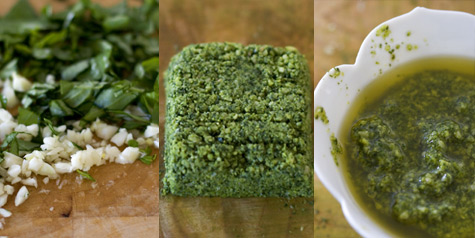http://www.bcbabyfriendly.ca/whatsinbreastmilkposter.pdf
Over the Thanksgiving Holiday I had a family member say to me, "aren't the benefits of breastfeeding void after one year of age?" My answer to this... How could that ever be the case seeing the list here. The benefits are astounding! I think it's safe to say that breast milk is by far the best SUPER FOOD that ever existed!
Formula
Water
Carbohydrates
Lactose
Corn maltodextrinPartially hydrolyzed reduced minerals whey protein concentrate (from cow’s milk)Fats
Palm olein
Soybean oil Coconut oil
High oleic safflower oil (or sunflower oil)
M. alpina oil (Fungal DHA)
C.cohnii oil (Algal ARA)Minerals Potassium citrate
Potassium phosphate
Calcium chloride
Tricalcium phosphate
Sodium citrate
Magnesium chloride
Ferrous sulphate
Zinc sulphate
Sodium chloride
Copper sulphate
Potassium iodide
Manganese sulphate
Sodium selenateVitamins Sodium ascorbate Inositol
Choline bitartrate Alpha-Tocopheryl acetate Niacinamide Calcium pantothenate
Riboflavin
Vitamin A acetate Pyridoxine hydrochloride
Thiamine mononitrate
Folic acid Phylloquinone
Biotin
Vitamin D3 Vitamin B12Enzyme
Trypsin
Amino acid
Taurine
L-Carnitine (a combination of two different amino acids)
Nucleotides
Cytidine 5-monophosphate
Disodium uridine 5-monophosphate
Adenosine 5-monophosphate
Disodium guanosine 5-monophosphateSoy Lecithin
Breast Milk
WaterCarbohydrates (energy source) Lactose Oligosaccharides (see below)Carboxylic acid Alpha hydroxy acid
Lactic acid
Proteins (building muscles and bones)
Whey protein
Alpha-lactalbumin
HAMLET (Human Alpha-lactalbumin Made Lethal to Tumour cells)
Lactoferrin
Many antimicrobial factors (see below) Casein Serum albumin
Non-protein nitrogens
Creatine
Creatinine Urea
Uric acid Peptides (see below)
Amino Acids (the building blocks of proteins)
Alanine
Arginine
Aspartate Clycine Cystine
Glutamate
Histidine
Isoleucine
Leucine Lycine
Methionine
Phenylalanine
Proline
Serine Taurine Theronine Tryptophan Tyrosine
Valine Carnitine (amino acid compound necessary to make use of fatty acids as an energy source)
Nucleotides (chemical compounds that are the structural units of RNA and DNA)
5’-Adenosine monophosphate (5"-AMP)
3’:5’-Cyclic adenosine monophosphate (3’:5’-cyclic AMP)
5’-Cytidine monophosphate (5’-CMP)
Cytidine diphosphate choline (CDP choline)
Guanosine diphosphate (UDP)
Guanosine diphosphate - mannose
3’- Uridine monophosphate (3’-UMP)
5’-Uridine monophosphate (5’-UMP)
Uridine diphosphate (UDP)
Uridine diphosphate hexose (UDPH)
Uridine diphosphate-N-acetyl-hexosamine (UDPAH)
Uridine diphosphoglucuronic acid (UDPGA)
Several more novel nucleotides of the UDP type Fats
Triglycerides Long-chain polyunsaturated fatty acids
Docosahexaenoic acid (DHA) (important for brain development)
Arachidonic acid (AHA) (important for brain development) Linoleic acid Alpha-linolenic acid (ALA)
Eicosapentaenoic acid (EPA)
Conjugated linoleic acid (Rumenic acid)
Free Fatty Acids
Monounsaturated fatty acids Oleic acid
Palmitoleic acid Heptadecenoic acid
Saturated fatty acids Stearic Palmitic acid
Lauric acid
Myristic acid
Phospholipids
Phosphatidylcholine
Phosphatidylethanolamine
Phosphatidylinositol
Lysophosphatidylcholine
Lysophosphatidylethanolamine Plasmalogens Sphingolipids
Sphingomyelin Gangliosides
GM1
GM2 GM3
Glucosylceramide
Glycosphingolipids Galactosylceramide
Lactosylceramide Globotriaosylceramide (GB3)
Globoside (GB4) Sterols Squalene Lanosterol Dimethylsterol Methosterol
Lathosterol Desmosterol Triacylglycerol
Cholesterol 7-dehydrocholesterol
Stigma-and campesterol
7-ketocholesterol Sitosterol β-lathosterol
Vitamin D metabolites Steroid hormones
Vitamins Vitamin A Beta carotene
Vitamin B6 Vitamin B8 (Inositol) Vitamin B12
Vitamin C Vitamin D Vitamin E a-Tocopherol Vitamin K
Thiamine Riboflavin Niacin
Folic acid
Pantothenic acid BiotinMinerals Calcium
Sodium
Potassium Iron
Zinc
Chloride Phosphorus
Magnesium
Copper Manganese
Iodine Selenium Choline Sulpher
Chromium Cobalt Fluorine
NickelMetal Molybdenum (essential element in many enzymes)
Growth Factors (aid in the maturation of the intestinal lining)
Cytokines
interleukin-1β (IL-1β)
IL-2
IL-4
IL-6
IL-8
IL-10
Granulocyte-colony stimulating factor (G-CSF)
Macrophage-colony stimulating factor (M-CSF)
Platelet derived growth factors (PDGF)
Vascular endothelial growth factor (VEGF)
Hepatocyte growth factor -α (HGF-α)
HGF-β
Tumor necrosis factor-α
Interferon-γ
Epithelial growth factor (EGF)
Transforming growth factor-α (TGF-α)
TGF β1
TGF-β2
Insulin-like growth factor-I (IGF-I) (also known as somatomedin C)
Insulin-like growth factor- II
Nerve growth factor (NGF)
Erythropoietin
Peptides (combinations of amino acids)
HMGF I (Human growth factor) HMGF II
HMGF III Cholecystokinin (CCK)
β-endorphins
Parathyroid hormone (PTH)
Parathyroid hormone-related peptide (PTHrP)
β-defensin-1 Calcitonin
Gastrin Motilin
Bombesin (gastric releasing peptide, also known as neuromedin B)
Neurotensin
SomatostatinOxytocin Insulin
Corticosterone
Thrombopoietin
Gonadotropin-releasing hormone (GnRH)
GRH
Leptin (aids in regulation of food intake)
Ghrelin (aids in regulation of food intake)
Adiponectin
Feedback inhibitor of lactation (FIL) Eicosanoids Prostaglandins (enzymatically derived from fatty acids)
PG-E1
PG-E2
PG-F2
Leukotrienes Thromboxanes
ProstacyclinsEnzymes (catalysts that support chemical reactions in the body)
Amylase
Arysulfatase Catalase
Histaminase Lipase
Lysozyme
PAF-acetylhydrolase
Phosphatase Xanthine oxidaseAntiproteases (thought to bind themselves to macromolecules such as enzymes and as a result prevent allergic and anaphylactic reactions)
a-1-antitrypsin
a-1-antichymotrypsinPhagocytes Basophils
Neutrophils
Eoisinophils
Macrophages
Lymphocytes
B lymphocytes (also known as B cells)
T lymphocytes (also known as C cells) IgG IgD IgM
IgE Complement C1
Complement C2
Complement C3
Complement C4
Complement C5
Complement C6
Complement C7
Complement C8
Complement C9
Glycoproteins Lactadherin Alpha-lactoglobulin
Alpha-2 macroglobulin
Lewis antigens
Ribonuclease
Haemagglutinin inhibitors Developed as a student project for the Breastfeeding Course for Health Care Providers, Douglas College, New Westminster, BC, Canada - © 2007 by Cecily Heslett, Sherri Hedberg and Haley Rumble.
Lactoferrin (binds to iron which prevents harmful bacteria from using the iron to grow)
B12 binding protein (deprives microorganisms of vitamin B12)
Carbohydrates
Triiodothyronine (T3)
Thyroxine (T4)
Thyroid stimulating hormone (TSH) (also known as thyrotropin)
Thyroid releasing hormone (TRH)
Prolactin




